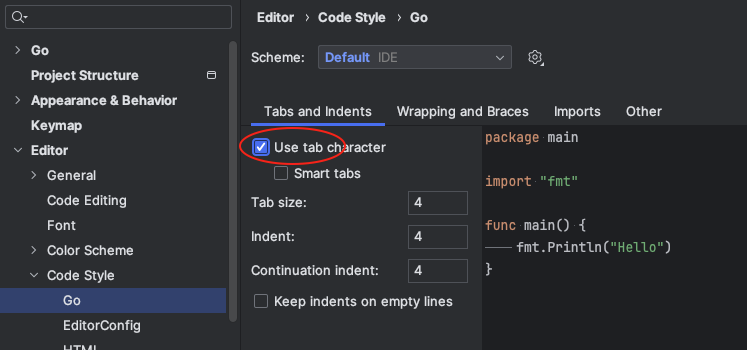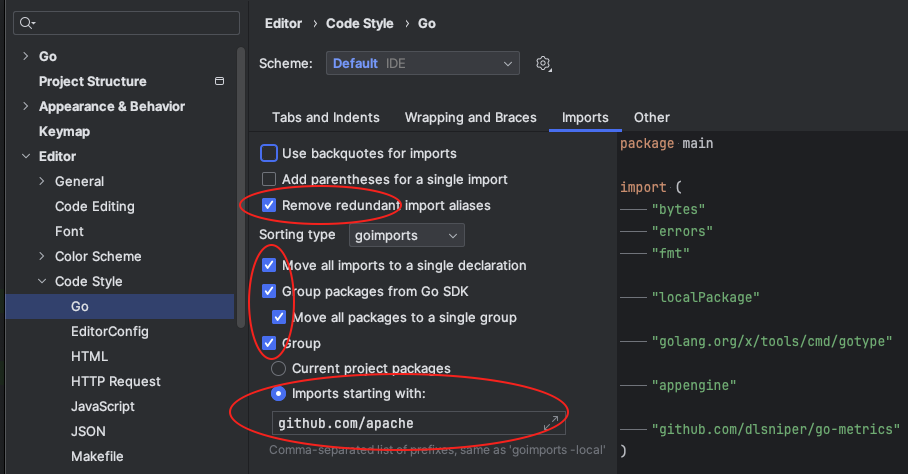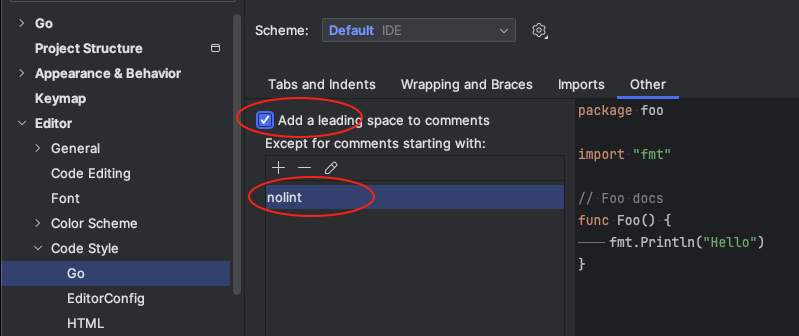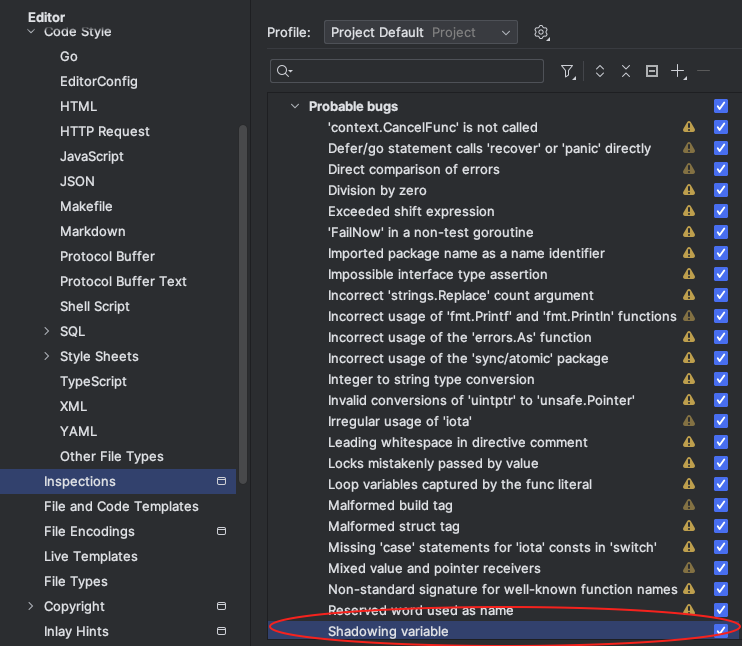Coding Guidelines
The basics
GO as a language provides a build in formatter for the code: gofmt.
The project uses the predefined format as implemented in gofmt.
That means tabs and not spaces etc.
Read the Effective GO page for further details.
Before creating a pull request make sure the code at least is formatted using gofmt.
Beside the effective GO guide follow the recommendations from the CodeReviewComments wiki page. The wiki provides a good collection of comments from code reviews. Most of the comments will be checked in the automated checks described below.
When using an IDE, like GoLand or Visual Studio Code, use the builtin options. Most IDEs will provide an extensive list of checks or formatting options that help formatting and point out code issues. See IDE setup for a basic setup for the GoLand IDE.
Automated checks
Not all code will be written using an IDE. Even between contributors the settings might not be the same in all installs. To help keep code formatted consistently a lint tool is part of the code approval.
There are a large number of lint tools are available for Go. Most of the lint tools only check one specific thing. Some of the tools will aggregate a number of linters and provide an overview of all the issues found. For the project we have chosen the golangci-lint tool. The tool can be run locally and is integrated into the GitHub PR flow.
Installing and running locally
The tool can be installed and run via the Makefile:
make lint
This will install and run the correct version of the linter in the tools directory, based on the project's Go version.
Configuration
A predefined configuration is provided for the two projects that use them:
- YuniKorn k8shim, configuration file golangci.yml.
- YuniKorn core, configuration file golangci.yml.
The web interface is a javascript project and the scheduler interface only has generated Go code and thus do not use it.
False positives
Tools are never 100% correct and neither is this one. Certain issue are too hard to correct or are not important enough to fix.
The tool allows adding a comment to the code to ignore the issue. These comments should be used sparingly as they could hide issues. If they are used they should be accompanied by a comment to explain why they are used.
var s1 = "ignored by all linters" //nolint
var s2 = "ignored by the linter unused" //nolint:unused
Using the nolint comment without a specific linter is discouraged.
GoLand IDE setup
GoLand has a number of checks turned on by default. These defaults already provide a good coverage and mark a lot of issues found by the linters as issues. To extend the coverage further and help mark issues proactively check the following settings and change them to the settings as per the screenshots.
Editor preferences
Open the preferences pane and go to: Editor -> Code Style -> Go.
There are three tabs to configure, the first two are crucial to comply with the basic rules from gofmt and goimports:
| Tabs |  |
| Imports |  |
| Other |  |
The imports as configured above should create 3 groups of imports in a file when they are used:
- standard library imports
- third-party imports
- YuniKorn internal imports
In the file it will give you an import that looks like this:
import (
// standard libraries
// third-party
// YuniKorn project imports
)
Inspections
The default inspections can be used except for one that helps highlight shadowing variables. Shadowing can cause difficult to trace and obscure bugs in the code and should be prevented whenever possible.
